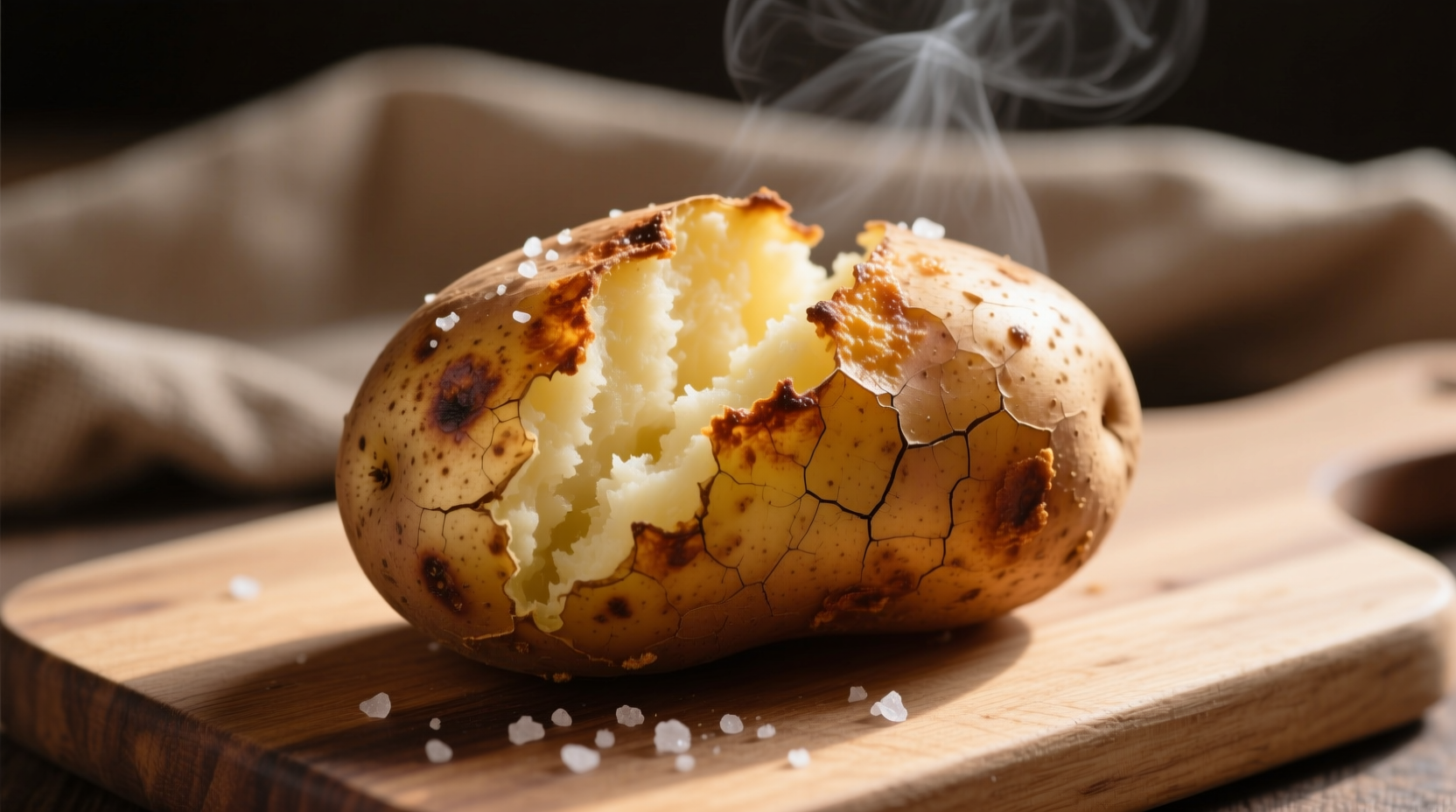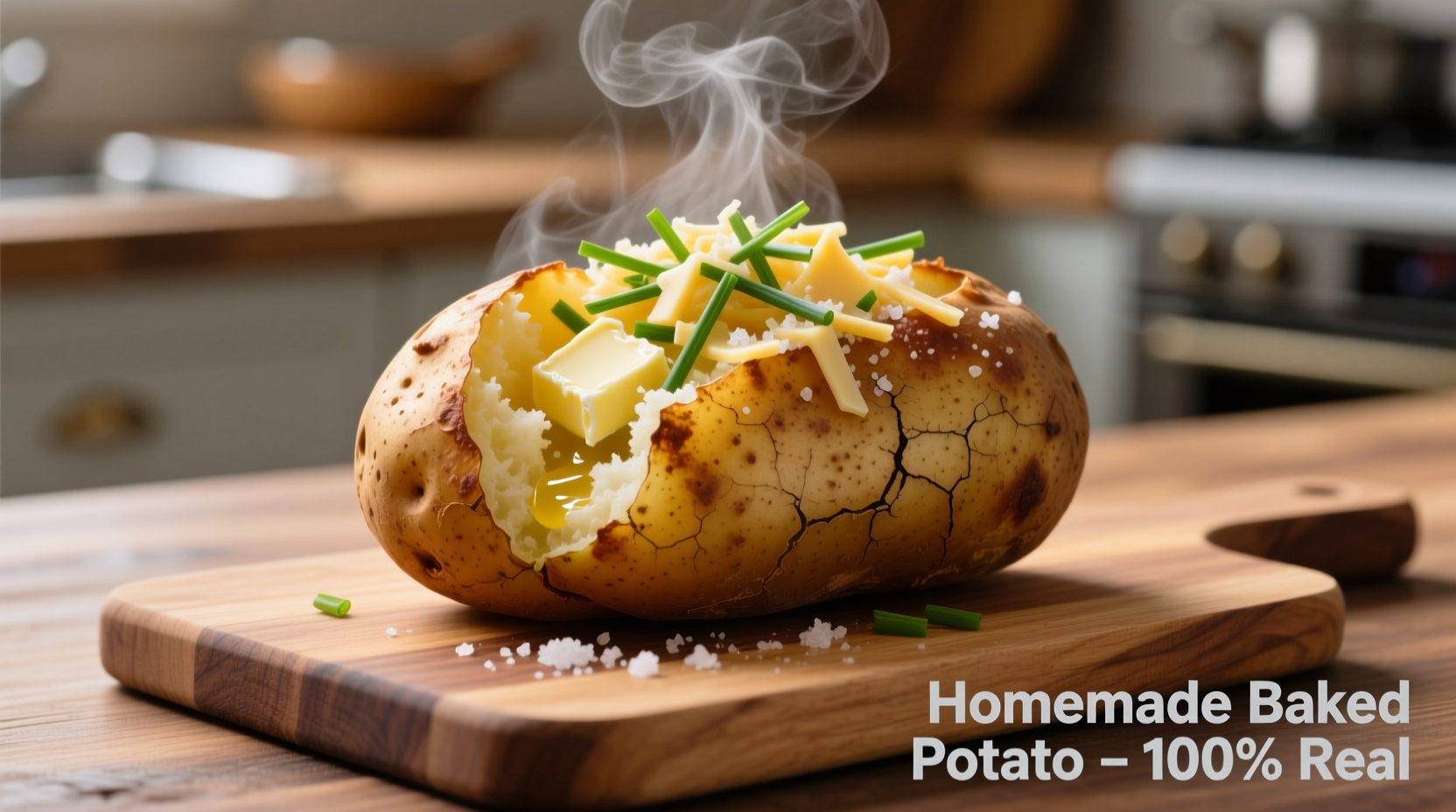The perfect baked potato requires just three essential elements: the right potato variety, proper preparation technique, and precise cooking time. Russet potatoes baked at 400°F (204°C) for 45-60 minutes yield fluffy interiors and crispy skins every time. This comprehensive guide delivers professional chef-tested methods for achieving restaurant-quality results with foolproof temperature guidelines and science-backed preparation tips.
Why Russets Reign Supreme for Baking
Not all potatoes bake equally. Russet potatoes dominate professional kitchens for baked preparations due to their high starch content and thick skins that crisp beautifully. The University of Idaho's Potato School confirms russets contain 20-22% dry matter compared to 16-18% in Yukon Golds, creating that signature fluffy texture home cooks seek.
| Potato Variety | Best For | Texture When Baked | Recommended Cooking Time |
|---|---|---|---|
| Russet | Classic baked potato | Fluffy, light interior | 45-60 minutes at 400°F |
| Yukon Gold | Creamy preparations | Buttery, moist interior | 35-50 minutes at 400°F |
| Sweet Potato | Nutrient-rich option | Dense, moist interior | 50-65 minutes at 400°F |
Preparation Protocol: The 3-Step Professional Method
Professional kitchens follow this exact sequence for optimal results. First, thoroughly scrub potatoes under cold running water using a vegetable brush—never peel. The USDA's Food Safety and Inspection Service emphasizes that potato skins contain valuable nutrients and fiber that would otherwise be lost.
Second, pierce each potato 4-6 times with a fork. This critical step prevents steam buildup that could cause explosive results. Third, apply a thin coating of oil and massage in coarse salt. This dual-action technique creates the perfect crispy skin while enhancing flavor penetration.

Temperature Control: The Science of Perfect Baking
Temperature precision separates adequate from exceptional baked potatoes. The National Potato Council's culinary research shows that baking at 400°F (204°C) creates the ideal environment for starch conversion. At this temperature, the internal moisture converts to steam gradually, creating those desirable fluffy pockets.
Insert an instant-read thermometer into the thickest part when you suspect doneness. The magic number? 210°F (99°C) internal temperature. This USDA-recommended threshold ensures complete starch gelatinization without overcooking. Baking below 375°F risks gummy interiors, while temperatures above 425°F cause rapid moisture loss.
Advanced Cooking Methods Compared
Oven Method: The gold standard for texture. Place directly on oven rack with baking sheet below to catch drips. Rotate halfway through cooking for even browning. This traditional approach delivers superior results but requires the most time.
Air Fryer Technique: For time-pressed cooks, air fryers reduce cooking time by 25% while maintaining excellent texture. Set to 380°F (193°C) for 30-40 minutes, flipping halfway. The circulating hot air creates remarkably crispy skins.
Restaurant Hack: Many chefs partially bake potatoes in convection ovens then finish in warming drawers. This maintains perfect texture while allowing on-demand service—a technique worth adapting for holiday meals when oven space is limited.
Serving Strategies That Elevate Your Baked Potato
Never cut into a baked potato immediately. Allow 5 minutes of resting time—this critical window lets starches set properly. Slice lengthwise, then gently press ends toward center to open naturally. Insert a tablespoon of cold butter into the opening and let it melt slowly through the interior.
For maximum flavor impact, season in layers: a pinch of flaky salt inside the potato, more on top of melted butter, and fresh cracked pepper after adding toppings. This layering technique creates dimension impossible with single-application seasoning.
Troubleshooting Common Baking Problems
Gummy texture: Caused by undercooking or wrapping in foil. Always bake uncovered and verify internal temperature reaches 210°F.
Soggy skin: Results from insufficient oil or humidity in oven. Pat potatoes completely dry before oil application and avoid overcrowding on baking sheet.
Uneven cooking: Rotate potatoes halfway through baking and select similarly sized potatoes when cooking multiples. The University of California Cooperative Extension recommends no more than 2-inch difference in diameter when baking multiple potatoes simultaneously.
Storage and Reheating Guidelines
Cool completely before refrigerating in shallow containers—never store wrapped in foil. The FDA Food Code specifies two-hour maximum at room temperature for cooked potatoes due to botulism risk in anaerobic environments.
Reheat in oven at 350°F (177°C) for 15-20 minutes for best texture retention. Microwaving creates uneven results and rubbery skins. For meal prep enthusiasts, partially baked potatoes can be refrigerated for up to 24 hours before finishing—the perfect solution for busy weeknights.











 浙公网安备
33010002000092号
浙公网安备
33010002000092号 浙B2-20120091-4
浙B2-20120091-4